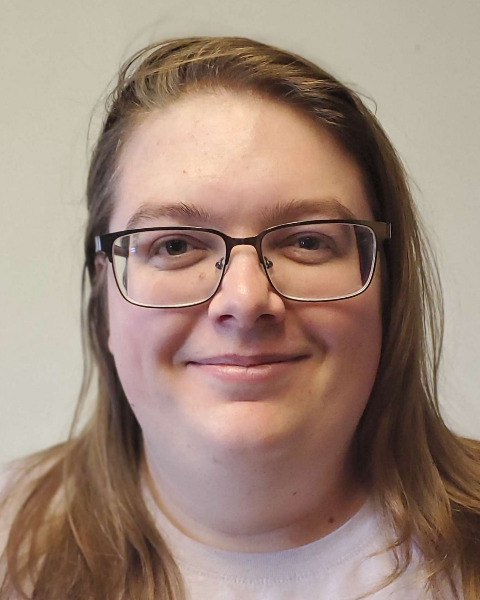Anatomy Education Posters
Poster: Anatomy Education Posters
83 - Decreasing Costs to Increase Access: A Mixed-method 3D Printing Protocol for Crafting Affordable Anatomical Casts for Organ Model Production
Sunday, March 24, 2024
5:00pm - 7:00pm US EDT
Location: Sheraton Hall
Poster Board Number: 83
There are separate poster presentation times for odd and even posters.
Odd poster #s – first hour
Even poster #s – second hour
Co-authors:
There are separate poster presentation times for odd and even posters.
Odd poster #s – first hour
Even poster #s – second hour
Co-authors:
Maureen Stabio, Ph. D. - Associate Professor, Department of Cell and Developmental Biology, University of Colorado, Anschutz Medical Campus; Chelsea Lohman, Ph. D. - Assistant Professor, Department of Cell and Developmental Biology, University of Colorado, Anschutz Medical Campus

Zachary Stetter, BFA
Graduate Student
University of Colorado, Anschutz Medical Campus
Aurora, Colorado, United States
Presenting Author(s)
Abstract Body : Three-dimensional (3D) models are a valuable teaching tool in the anatomy educator toolbox. Physical models help students visualize spatial relationships and are vital for institutes without access to cadaveric donors; however, the cost of commercial models is prohibitive for large classes (ranging from $100 - $1000/model). Moreover, commercial models are not customizable and often have lower fidelity to real human anatomy.
The recent expansion of 3D printing technology can overcome some disadvantages of traditional plastic models, but prices of 3D printers range from $200 for small single filament printers to $24,000 for large multi-filament printers. Protocols that use low-cost printers are key to increasing accessibility. Here, a protocol was created to scale the production of low cost, durable anatomical models by combining single-filament 3D printing, silicone molding, and resin casting.
An open access online 3D human cadaver brain model was 3D printed in two halves with a Prusa Mk3 printer (Prusa Research) with PLA filament (Polymaker). The prints were joined with plastic bonder (J-B Weld), then secured within a container. Liquid silicone (Mold Max) was poured around the brain and cured for 48 hours. The 3D printed brain was removed to create a reusable, silicone mold. Colored 3D-prints of the hippocampus and ventricles were segmented from an open-source MRI, printed, and suspended with supports in the silicone mold. Clear resin (Superclear) was poured into the negative space, cured for 48 hours, and the silicone mold removed. The final resin brain model was sanded and polished. Additional models were poured, and a cost analysis performed.
The production cost of the silicone reusable mold was $141 and 1.5 gallons of resin (enough for 5 brains) was $160. From this mold, resin can be poured to create multiple high fidelity human brain replicas. The total cost was $44 per model when 10 models were produced. This is 10% the cost of the same model printed en bloc on a multi-color resin 3D-printer, 6% the cost of a commercial plastic brain model and < 1% the cost of a plastinated cadaveric brain.
The multi-use ability of silicone mold allows for greater scalability at reduced cost for accurate, consistent, and durable anatomical models. This mixed method approach can be adapted to different organs, structures, or pathology.
Lower cost models may increase access and inclusion of anatomy education for a greater population of students. Institutions can adapt this approach to meet the various needs of their curricula further expanding access to otherwise unavailable resources. Evaluation is underway to evaluate effectiveness of the models in the classroom.
The recent expansion of 3D printing technology can overcome some disadvantages of traditional plastic models, but prices of 3D printers range from $200 for small single filament printers to $24,000 for large multi-filament printers. Protocols that use low-cost printers are key to increasing accessibility. Here, a protocol was created to scale the production of low cost, durable anatomical models by combining single-filament 3D printing, silicone molding, and resin casting.
An open access online 3D human cadaver brain model was 3D printed in two halves with a Prusa Mk3 printer (Prusa Research) with PLA filament (Polymaker). The prints were joined with plastic bonder (J-B Weld), then secured within a container. Liquid silicone (Mold Max) was poured around the brain and cured for 48 hours. The 3D printed brain was removed to create a reusable, silicone mold. Colored 3D-prints of the hippocampus and ventricles were segmented from an open-source MRI, printed, and suspended with supports in the silicone mold. Clear resin (Superclear) was poured into the negative space, cured for 48 hours, and the silicone mold removed. The final resin brain model was sanded and polished. Additional models were poured, and a cost analysis performed.
The production cost of the silicone reusable mold was $141 and 1.5 gallons of resin (enough for 5 brains) was $160. From this mold, resin can be poured to create multiple high fidelity human brain replicas. The total cost was $44 per model when 10 models were produced. This is 10% the cost of the same model printed en bloc on a multi-color resin 3D-printer, 6% the cost of a commercial plastic brain model and < 1% the cost of a plastinated cadaveric brain.
The multi-use ability of silicone mold allows for greater scalability at reduced cost for accurate, consistent, and durable anatomical models. This mixed method approach can be adapted to different organs, structures, or pathology.
Lower cost models may increase access and inclusion of anatomy education for a greater population of students. Institutions can adapt this approach to meet the various needs of their curricula further expanding access to otherwise unavailable resources. Evaluation is underway to evaluate effectiveness of the models in the classroom.

